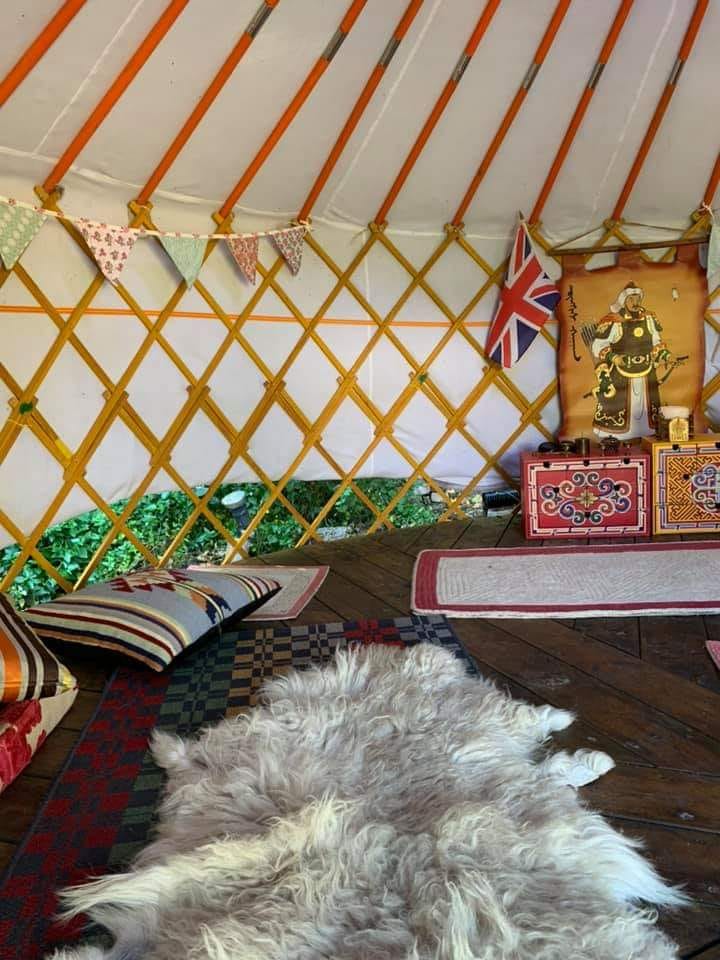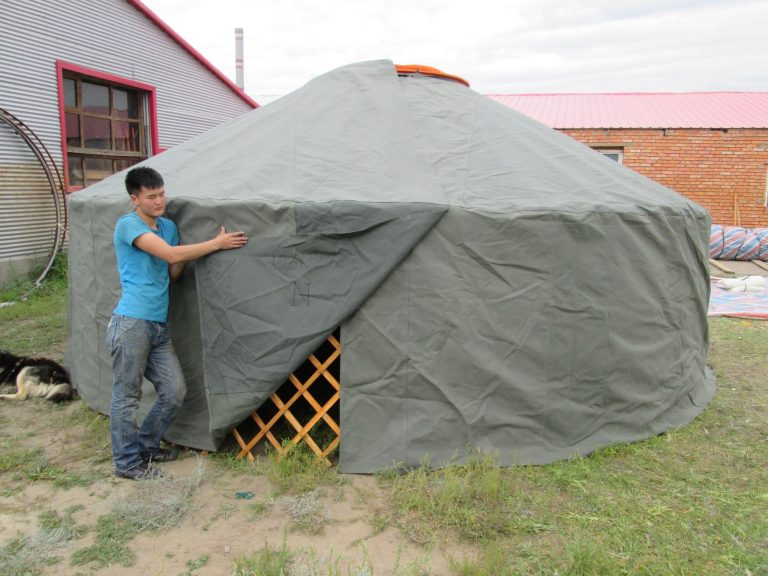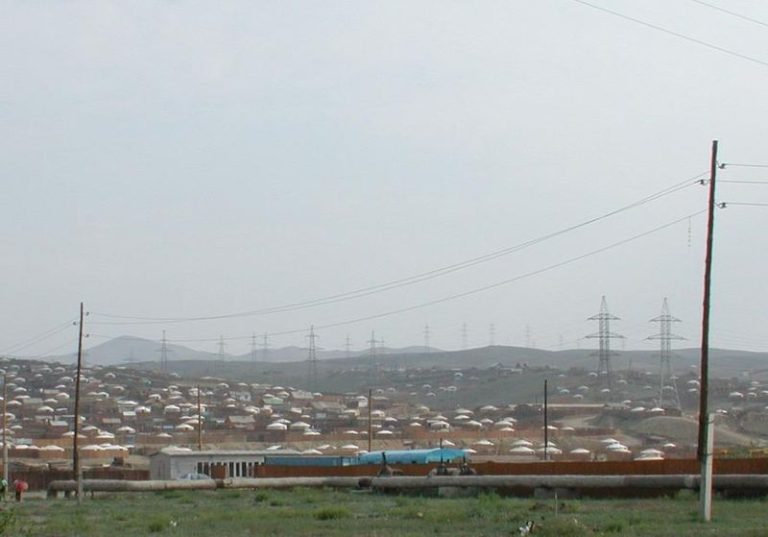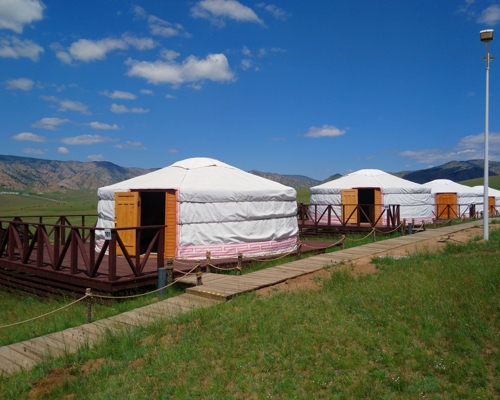Mongolian, Kazakh, Kyrgyz Yurt Differences
In the vast landscapes of Mongolia, Kazakhstan, and Kyrgyzstan, the yurt stands as a profound symbol of culture, heritage, and nomadic tradition.
Each canvas dwelling, be it the Mongolian Ger, Kazakh Yurt (Kiyiz), or Kyrgyz Yurt (Booz Yi), weaves a narrative unique to its cultural roots and historical evolution.
As portable abodes resistant to the harsh realities of mountainous and steppe environments, these yurts share a common functionality born out of necessity for nomadic lifestyles.
However, beneath these overarching similarities lie distinctive characteristics, construction methods, and symbolic meanings that set them apart. This exploration delves into the nuanced differences and shared threads that define Mongolian, Kazakh, and Kyrgyz yurts, unraveling the rich tapestry of nomadic life encapsulated within each.
Mongolian Yurt / Ger
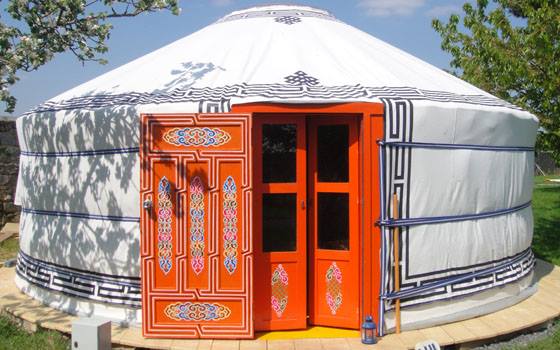
The Ger, derived from the Mongolian word for home or house, represents not just a dwelling but a profound embodiment of cultural heritage and adaptability. Originating in Mongolia, the Ger’s influence spread far and wide, echoing through the annals of the Mongol Empire.
Construction
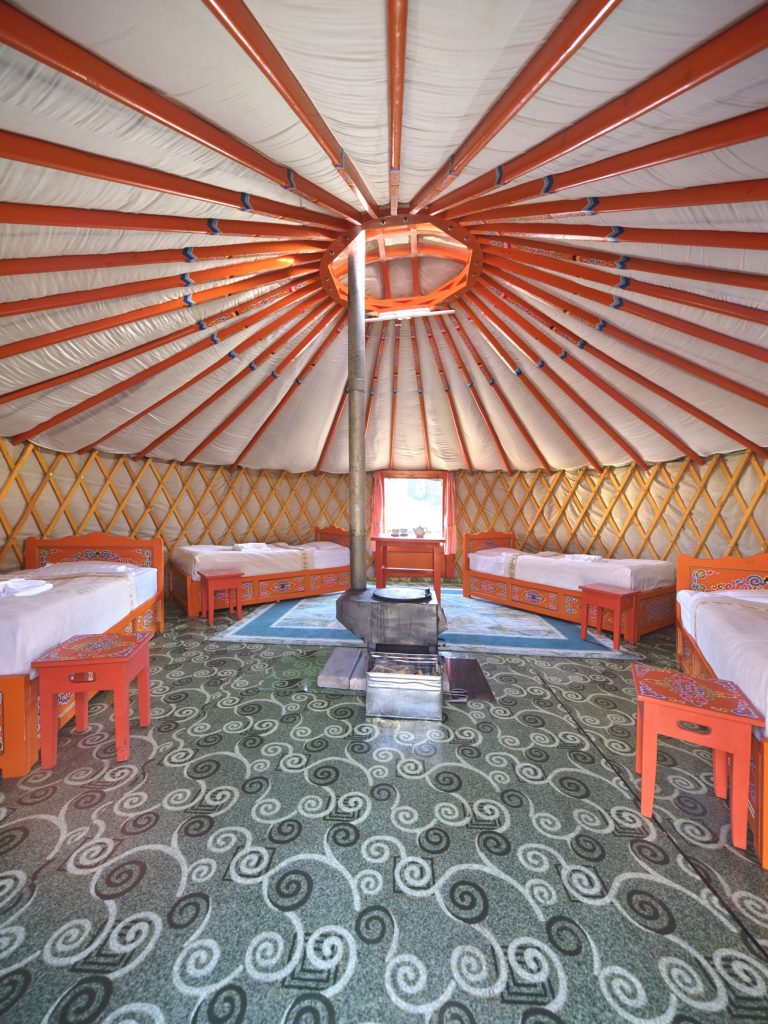
The Ger’s construction is a communal affair, typically taking 30 minutes to 3 hours, with men primarily leading the construction efforts while women provide invaluable support.
1. Crown Wheel (Toono): The crown wheel, a wooden or metal ring atop the ger, plays a pivotal role in supporting the walls and roof. Beyond structural support, it serves as a mechanism to regulate airflow and illuminate the interior. This dynamic feature, when coupled with the central stove, allows the ger’s inhabitants to control the escape of smoke and welcome natural light.
2. Pillars: Pillars serve as the foundation of the ger, ensuring stability and preventing tilting or collapsing due to external forces. The height of the ger is determined by the pillars, emphasizing their crucial role in maintaining the integrity of the structure.
3. Rafters: Symbolizing the sun’s rays, rafters are beams that connect the top of the walls to the crown wheel. They not only contribute to the dome-like external shape of the ger but also act as a wind-reducing mechanism. This integration of functional and symbolic elements highlights the thoughtful design of the ger.
4. Walls: Walls, typically made of wood or metal, form the structural framework of the ger. Covered with insulating materials such as felt, they protect against the harsh Mongolian weather, creating a comfortable and cozy interior even in cold climates.
5. Door: The ger’s door, a central and vital feature, is strategically positioned facing south to maximize sunlight exposure. Crafted from wood or felt, the door serves not only as an entrance but also as a crucial element in maintaining warmth by tightly sealing out cold winds.
6. Felt Covering (Urkh): The ger’s walls are covered in white felt, a traditional material that acts as insulation against the extreme cold of Mongolian winters. The felt covering, when meticulously secured with triple-layered belts, not only stabilizes the structure but also holds cultural significance, symbolizing the past, present, and future.
7. Wooden Floor: Choosing a wooden floor adds another layer of adaptability to the ger. In summer, a cooler atmosphere can be achieved with materials like cork or bamboo, while winter demands thicker wood or additional insulation for a warmer underfoot experience.
Kazakh Yurt (Kiyiz)
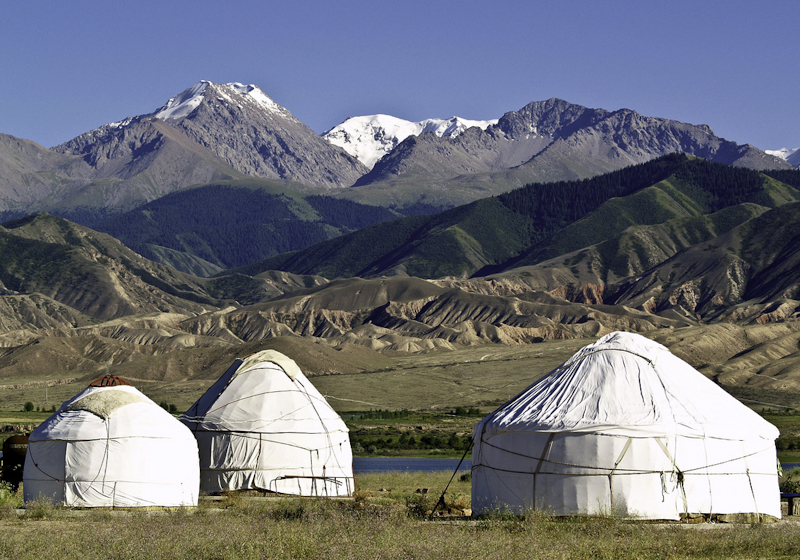
In stark contrast to its more utilitarian counterpart, the Mongolian ger, the Kazakh yurt stands out with its intricate decorations, vibrant colors, and symbolic motifs, offering a visual feast that reflects the rich heritage and artistic sensibilities of the Kazakh people.
Also, there are no Bagana or pillars to hold the crown in the middle and no wooden doors, mainly rolled-up tarp or something similar.
Construction
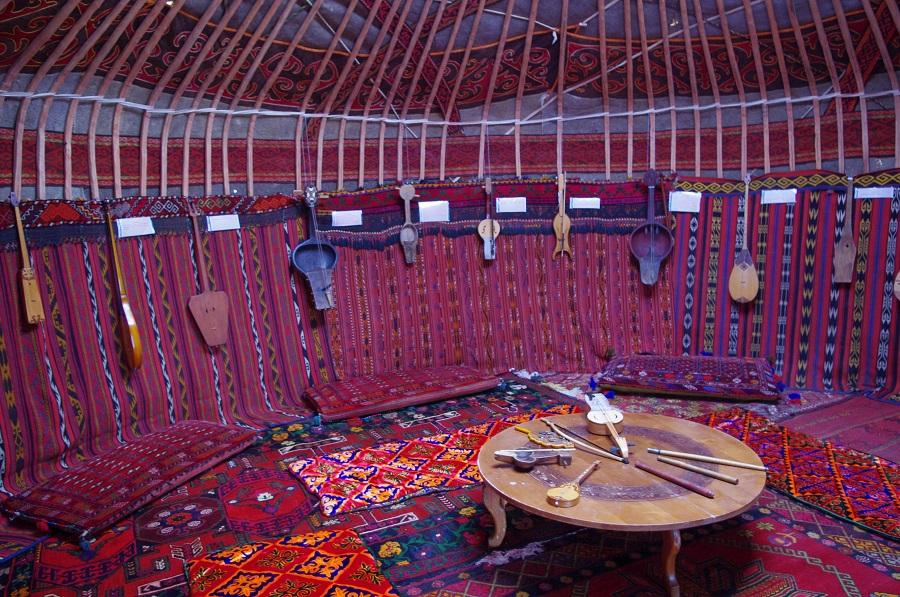
Typically assembled by women, the yurt’s construction involves a meticulously choreographed process. The door frame is the starting point, and the kerege links gradually close the circle.
The shanyrak, held high on a pole by a man in the center, has yuk poles inserted into square holes around the rim. Willow wood, the primary material, forms the framework, while a felt cover provides protection from the elements—wind, rain, snow, and the scorching sun.
- Kerege (Latticework): Forming the walls, the kerege is a lattice structure providing structural integrity and flexibility.
- Yuk (Uuk): These poles create a dome-like structure, contributing to the yurt’s resilience against strong winds on the steppe.
- Shanyrak: Serving as the top of the yurt, the shanyrak is a round rim, a skylight, and a smoke hole. It holds such significance that it is depicted on the National Emblem of Kazakhstan.
Kyrgyz Yurt (Booz Yi)
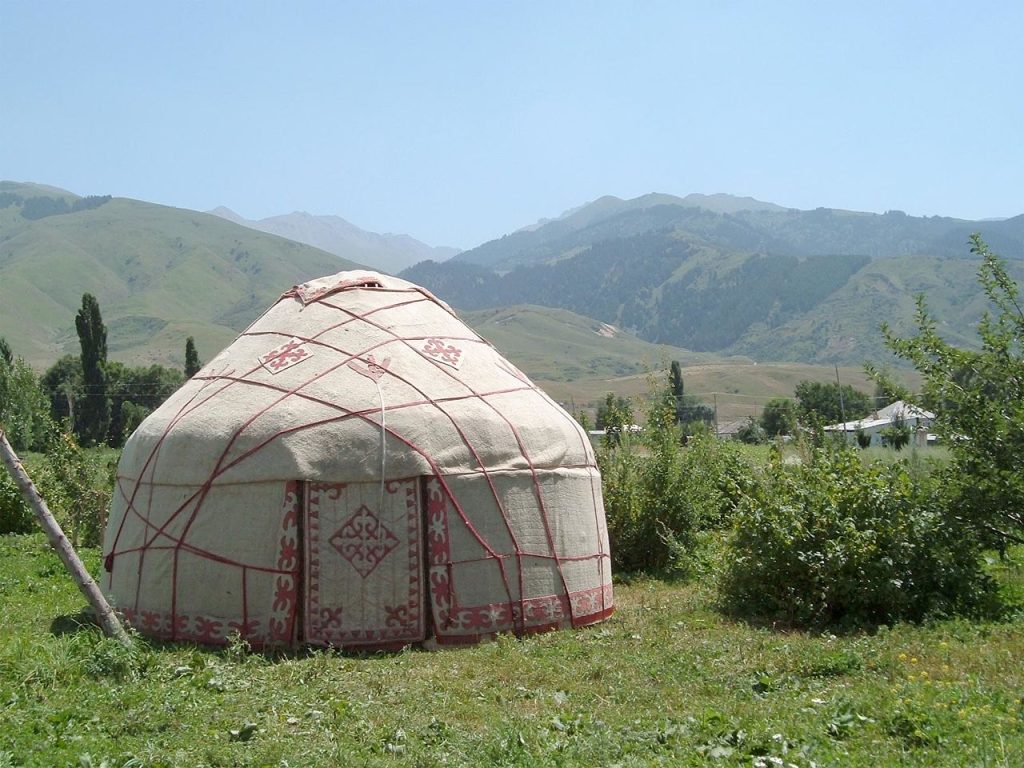
The Kyrgyz Yurt or Booz Yi is very similar to their Kazakh counterpart. However, the structure or the roof of the yurt is sloped a lot higher and is a lot taller.
The national flag of Kyrgyzstan is inspired by the yurt crown and is the centerpiece of the Booz Yi.
In Mongolian and Kazakh Yurts, the right side is considered as the men’s side and the left is the women’s side. On the contrary, the left side is considered men’s while the right is the women’s in Kyrgyz Yurts.

